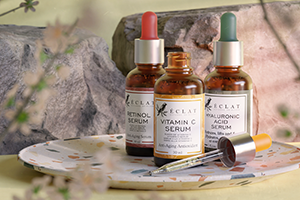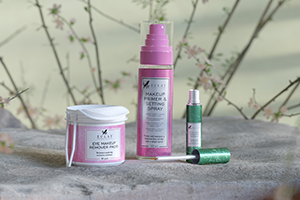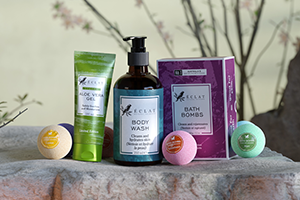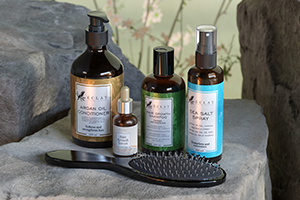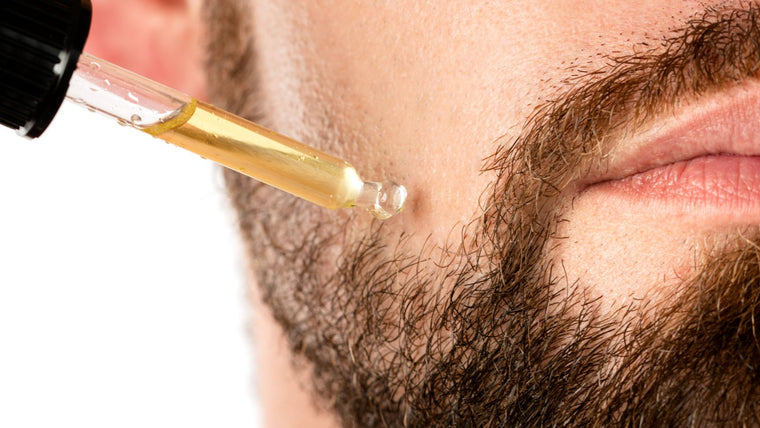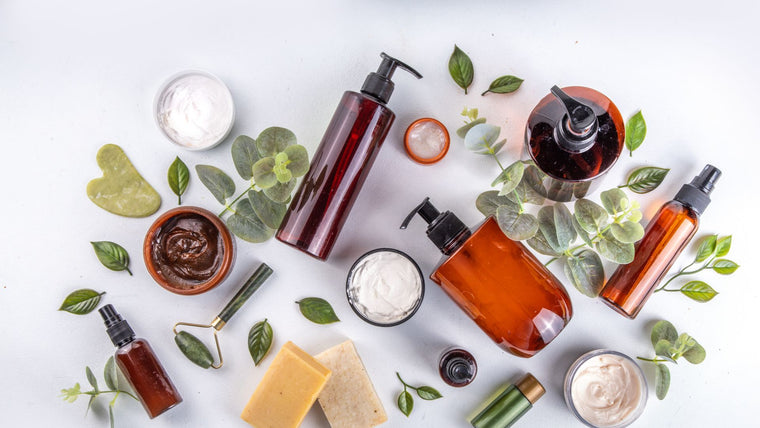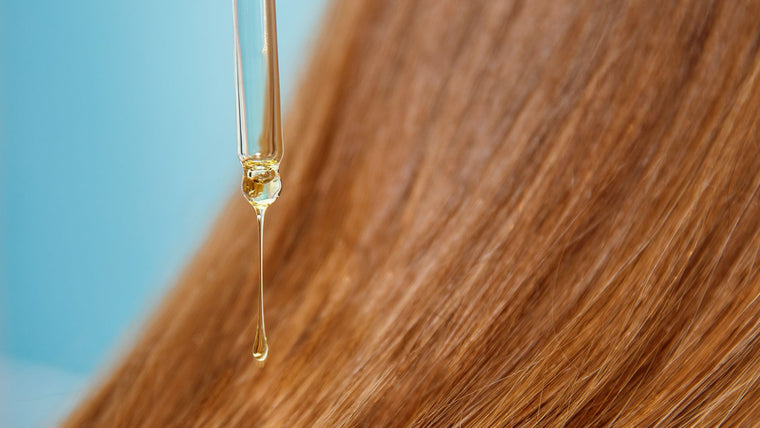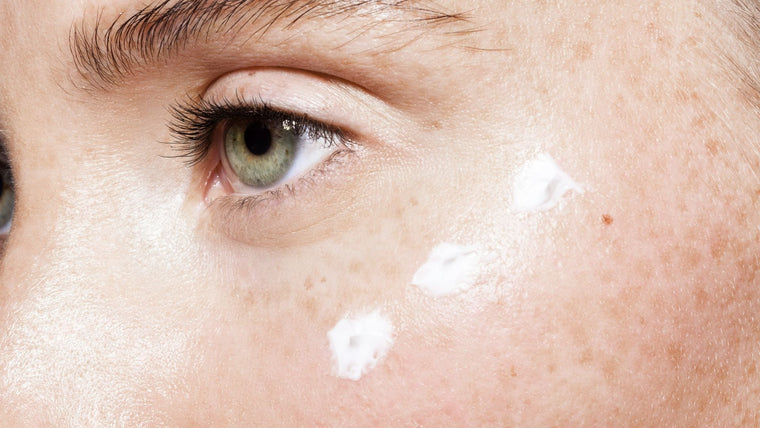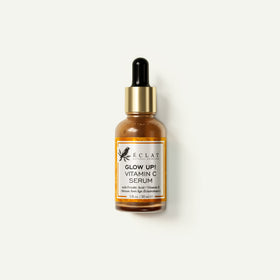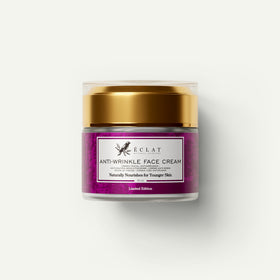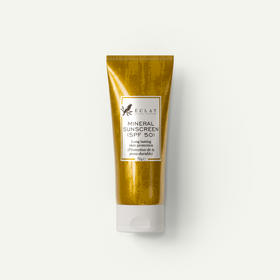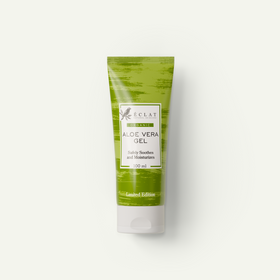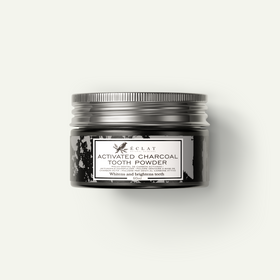Mineral vs. Chemical Sunscreen: What's the Difference, and What's Best for Me?
- 20/04/2023

We've all experienced it before. The burn. The itch. The peel. That's right, you've got a sunburn. But how exactly do sunburns occur? And with a choice of mineral and chemical sunscreens, what's the best sun protection? We're about to break it down for you.
A sunburn is an inflammatory reaction that occurs on the skin's surface when the sun's rays damage melanin. For any sun care newbies, melanin is the pigment that gives your skin its natural color.
Everyone's skin is different, which is why some people turn bright red while others develop more of a golden glow.
But did you know that all sunburns are created equal? All types of burn—from tanning to blistering—contribute to premature aging, wrinkles, and skin cancer. In fact, any sun exposure can lead to cancer down the line.

Sun damage is no joke. That's why using a mineral sunscreen or chemical sunscreen is an absolute must, no matter the climate or season. So, what is sunscreen, how does it work, and what's the difference between mineral and chemical sunscreens?
Sunscreen: the basics
Depending on locale, it's known by different names: sunscreen, sun cream, sunblock, sun protection, or SPF (sun protection factor). All sun protection products do the same thing: act as a barrier between UVA and UVB rays and skin cells.
Sunscreen comes in many forms, including creams, sprays, oils, sticks, gels, and liquids. Some types are better for daily use, while others are more adept at blocking the sun's rays for long periods of time (think sunny, sweltering beach days).
If there's one thing you'll always want in a sunscreen, it's broad-spectrum protection. As we've mentioned, there are two types of UV rays: UVA and UVB. Broad spectrum sunscreen protects against both.

It's common to see varying SPF ratings on different sun protection products, ranging from as little as 15 to as high as 70+. You may have seen products touting an "SPF 100" badge, but don't be fooled—no sunscreen can block 100% of UV rays.
Impressively, SPF 50 sunscreens can block a whopping 98% of UV rays. With this in mind, we recommend choosing a broad-spectrum sunscreen with an SPF of 50.
Now we've covered the basics, you may be asking yourself, if all sunscreens do the same thing, then what's the difference between mineral sunscreens and chemical sunscreens, and does it matter which one I use? We've answered all your burning questions below.
Mineral sunscreen
Mineral sunscreens, also called physical sunscreens, are a form of sun protection that utilizes minerals to block harmful UV rays. Most mineral sunscreens include either titanium dioxide or zinc oxide, but heavy hitters will have both.
While these sunscreen ingredients may sound scary, mineral formulas are considered by most professionals as being safer than chemical sunscreens. But we'll get into the nitty-gritty of chemical sunscreen later.

How it works
Mineral sunscreen blocks sunrays from reaching the skin's surface by acting as a physical barrier against sun exposure. It deflects and scatters harmful UV rays before they reach skin.
While it's impossible to see this process in action, (after all, it's not visible to the naked eye), there's an easy way to imagine how it protects skin cells. Think of yourself as a diamond—and when the sun's rays attempt to penetrate skin, they're reflected back, almost like a mirror.
If you're interested in how sunscreen works, Dianna Cowern (known on YouTube as Physics Girl) has a pretty nifty video demonstrating its ability to block harmful, skin cancer-causing UV rays.
Now that we've covered how mineral sunscreen works, it's time to discover the science behind it.
Let's talk mineral filters
As you might have guessed already, "sunblock" gets its name from the minerals that block the sun's rays, but there's a lot more to it.
Popularly known as "mineral filters", zinc oxide and titanium dioxide provide full-spectrum protection and are generally considered safer—and kinder to sensitive skin—than chemical filters.
While there are other types of filters on the mineral sunscreen market, zinc oxide and titanium dioxide are the only two mineral filters approved by the FDA.
But, are they the same? The answer to this is no, they're not! Both protect against both types of UV rays, but zinc oxide is more adept at protecting against UVA rays, while titanium dioxide is better suited to shield skin from UVB rays.

For those unfamiliar with these types of radiation, UVA rays contribute to premature skin aging like wrinkles (aka photodamage). UVB rays are what cause sunburn, and are the leading cause of skin cancer.
So, at the very least, you'll want to opt for a mineral sunscreen that has titanium dioxide. For full spectrum protection, we always recommend mineral sunscreens with both types of filters.
Chemical sunscreen
By now you probably already know that chemical sunscreens are a form of SPF that use chemical rather than mineral filters. Chemical sunscreens work by absorbing UVA and UVB rays once they reach skin—so your sun cream takes the brunt of the force, not your skin.
While chemical sunscreen has the same functionality as mineral sunscreen in that it provides similar amounts of sun protection, it's regarded by the scientific community as less safe than mineral sunscreen. This is mainly due to the types of filters used in chemical sunscreen, but we'll get to that later.
How it works
As mentioned, most chemical sunscreens work by absorbing the sun's UV rays when they reach the skin. Essentially, they absorb harmful UV wavelengths and convert them into harmless wavelengths.
More specifically, the active ingredients (or chemical filters) in chemical sunscreens undergo a chemical reaction when introduced to UV rays—it's this chemical reaction that's responsible for the above mentioned UV ray conversion from harmful to harmless. By the time these rays reach skin, you'll still feel the sun's heat, but it won't cause damage.

While this might sound pretty great, there are some downsides to chemical sunscreens that are still being studied, which brings us to the filters used in chemical sunscreens...
All about chemical filters
The active ingredients in chemical sunscreens are called chemical filters, and while the FDA lists 14 chemical filters to look for in SPF protection products, there are a few that are more popular (and more effective) than others.
The four types of chemical UV filters you're likely to see in chemical sunscreen are avobenzone, oxybenzone, octocrylene, and octinoxate. The important thing to note is that all four filters operate in the same way—by sponging harmful rays before they reach the skin.
However, recent studies suggest that chemical sunscreens can actually cause more harm than good in the long-run. This is because the different filters in chemical sunscreen can be absorbed through skin into the bloodstream.
While this means that chemical sunscreen products are less suitable for sensitive skin, there are deeper implications. Studies have found that some of these filters, including octocrylene, break down over time and turn into different compounds, like benzophenone.
Exposure to chemical compounds like benzophenone can increase your risk of cancer, which begs the question of whether chemical sunscreens are safe or not. The current FDA investigation on the implications of these chemical filters is still ongoing and, until a decision has been made, they've deemed only two filters as 100% safe in sunscreen: zinc oxide and titanium dioxide.
So, in the showdown of mineral vs. chemical sunscreen, which is the best?
The clear winner: mineral sunscreens
Considering the ongoing investigations into the safety of chemical filters, and the unquestionable efficacy of mineral filters, the obvious winners in this sunscreen battle are mineral sunscreens.
They're the gentler choice if you have sensitive or acne-prone skin. Plus, when used frequently, mineral sunscreens are a powerful protector against skin cancer.

While there aren't any downsides to mineral sunscreens in relation to UV protection or cancer links, one of their main cons is their tendency to leave white residue behind after application. For those who use sunscreen in their regular skincare and makeup routines, a white cast can quickly turn a good skin day into a terrible one.
Not all mineral sunscreens work the same, and some are created to prevent white casts altogether, which is why it's important to choose the right one for you.
Why choose Éclat mineral sunscreen?
As evidenced above, mineral sunscreens are your best bet for skin-safe sun protection, and you'll want to pick one that has both types of mineral filters.
Our SPF 50 mineral sunscreen is powered by both zinc oxide and titanium dioxide for broad-spectrum UV protection.
We formulate with nanonized mineral filters, which have smaller particles than traditional mineral filters. They absorb into skin without leaving a pesky white cast behind.
While our mineral filters may absorb into skin, they don't enter your bloodstream like chemical filters do. They still work the same way as non-nanonized particles, but this process removes the possibility of a white cast.

Our formula is suitable for all skin tones and types, and it has a matte, non-greasy finish that works well with makeup. It's enhanced with skin-boosting botanicals like licorice and oat extracts for all-day hydration. Studies also suggest that licorice can increase SPF's ability to protect skin from UV radiation.
To summarize...
Mineral sunscreen is the clear winner in the face-off between mineral and chemical sunscreen. We recommend choosing an SPF product with both types of FDA-approved mineral filters, and an SPF of 50.
It's also important to wear sunscreen whenever skin is exposed to UV rays (that's right, even on cloudy days). Many scientific studies state that daily SPF usage prevents premature aging and photo damage—so make sure you don't skip it!
No matter your preference, there's no doubt that your skin will benefit from sunscreen's photo-protective properties.
Recommended Products


